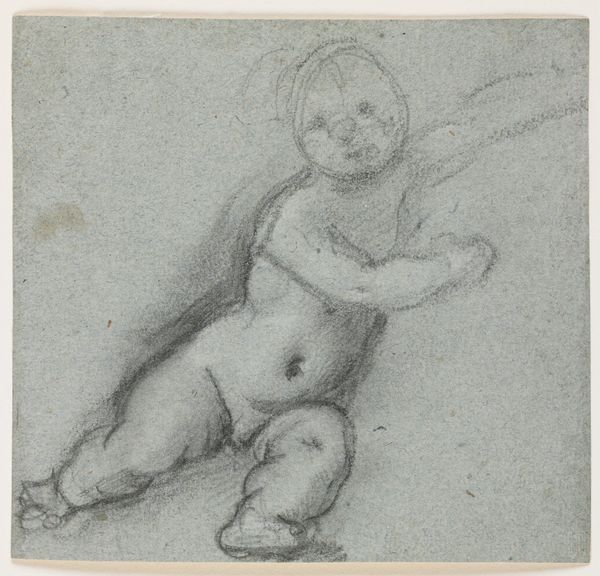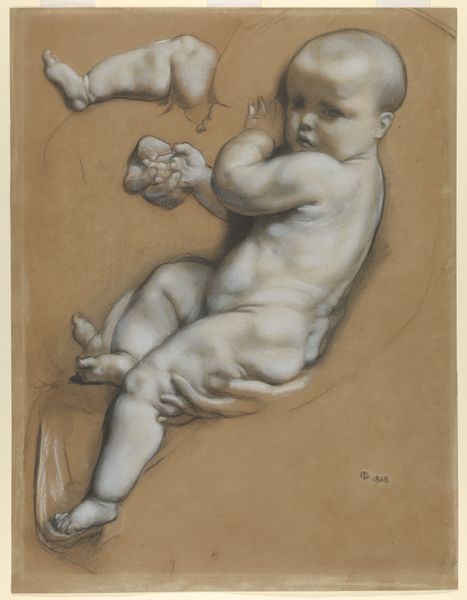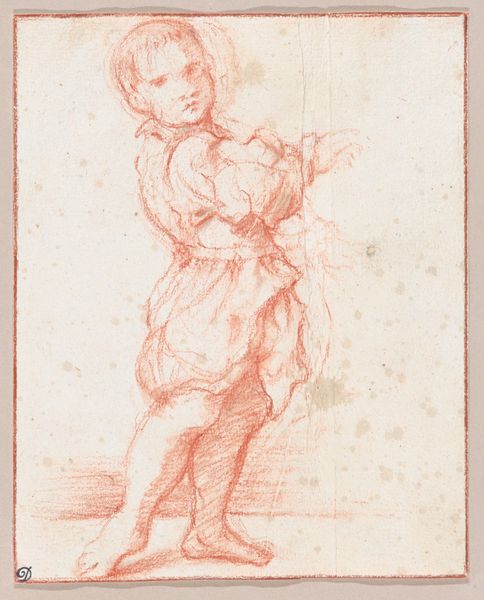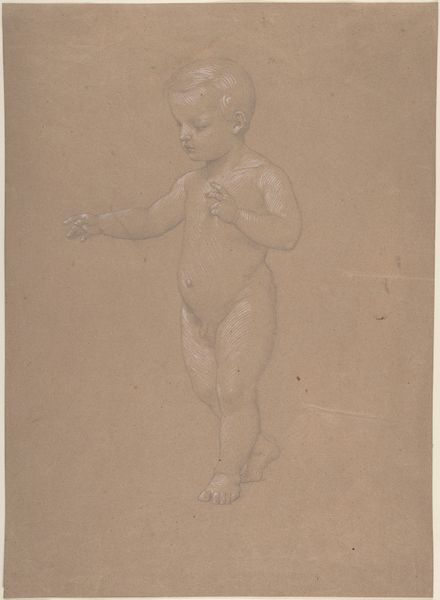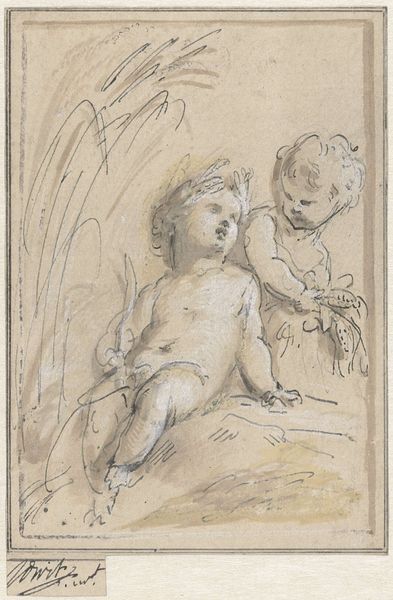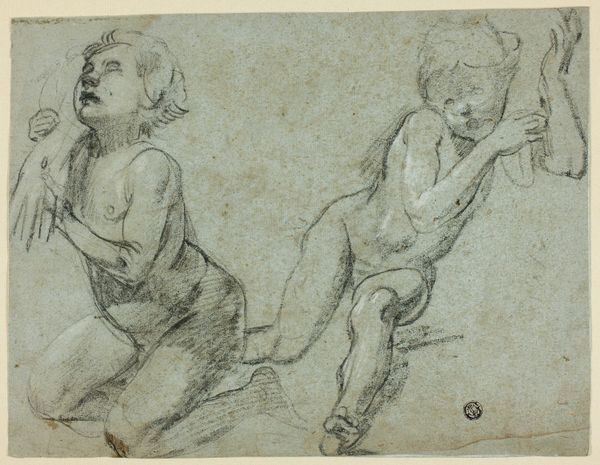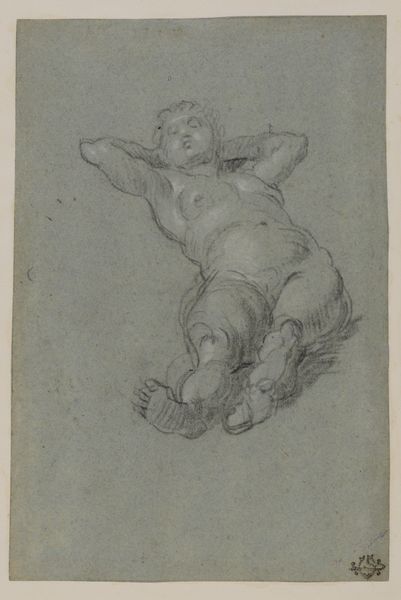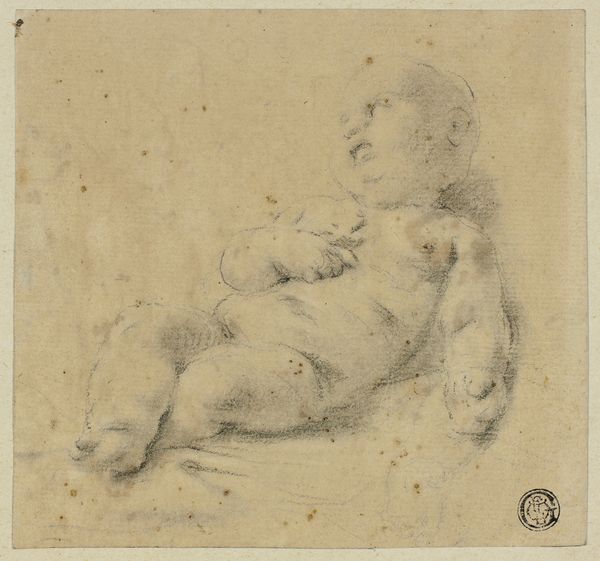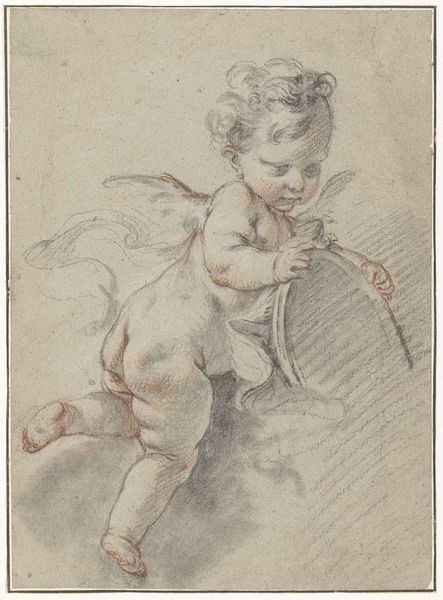
drawing, print, paper, dry-media, pencil, chalk, black-chalk
#
drawing
# print
#
figuration
#
paper
#
11_renaissance
#
dry-media
#
pencil
#
chalk
#
black-chalk
Dimensions: 251 × 202 mm
Copyright: Public Domain
Editor: This drawing is titled "Flying Putto," and it's attributed to an anonymous artist, dating from the Renaissance period. It’s done with pencil and chalk on paper. The softness of the drawing, and that little cherubic figure, it all feels very innocent. What do you see in this piece? Curator: Beyond the cherubic image, consider the social context. The figure of the putto, seemingly innocent, has historically been used to legitimize power structures. How does this image, rendered with such delicate detail, reflect the patron's desires and worldview, even perhaps masking disparities of wealth and privilege? Editor: So, it’s not *just* an innocent image, it's representative of those in power during the Renaissance? Curator: Precisely. Renaissance art often served to reinforce dominant ideologies. These seemingly harmless images were tools. Ask yourself, who commissioned this? What was their agenda? Editor: I never thought of it that way, always taking artwork as it presents itself at face value. Curator: The black chalk is beautiful, but let's delve into how it reflects gender roles in the Renaissance. Does this representation of an androgynous, innocent figure subtly perpetuate societal expectations of purity or subservience, particularly for women and children? Consider the gaze – is it passive, compliant? Editor: It does have a submissive air to it, actually. I was totally blind to that at first. Curator: This kind of drawing, this kind of image, would be shown, studied, circulated... who had access to it, who was excluded, and whose stories were erased by its very existence? Think about the implications. Editor: That gives me a lot to consider when viewing works from this era, that images don’t exist in a vacuum. Curator: Absolutely. Art is never neutral; it's a product of its time, reflecting both beauty and the often-unacknowledged power dynamics at play.
Comments
No comments
Be the first to comment and join the conversation on the ultimate creative platform.

